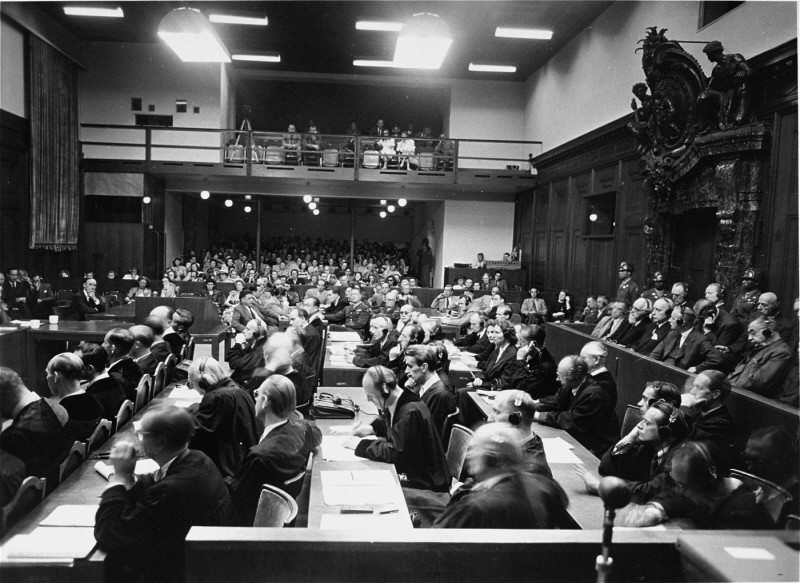Bayer
Key Facts
-
1
Best known for their path-breaking anti-inflammatory pain reliever, Aspirin, the Bayer pharmaceutical company was founded in 1863.
-
2
Bayer became part of IG Farben, a powerful German chemical conglomerate, in 1925.
-
3
Investigating Bayer’s role during World War II reveals the complex and often dark history of German pharmaceutical companies during the Holocaust.
The Founding of Bayer
The Bayer company was founded in Barmen, a city in the Rhineland, by the entrepreneur Friedrich Bayer and his partner Johann Weskott. The company originally produced synthetic dyes before expanding into the chemical and pharmaceutical markets. By the early 20th century, it had become a substantial and powerful company on the international stage. Bayer scored early successes in pharmacology with the patenting of phenobarbital (branded as Veronal), an early treatment for epilepsy, and heroin—now a banned substance because of its addictive nature— used until 1910 as a cough suppressant and as a less addictive alternative to morphine. In 1939, one of Bayer’s scientists, Gerhard Domagk, received the 1939 Nobel Prize for his discovery of the sulfanilamide Prontosil, the first commercially produced antibacterial drug.
While Germany was a leading manufacturer of chemicals and pharmaceuticals, international competition led to the creation in 1925 of a massive conglomerate known as IG Farben. The conglomerate included Bayer and other major companies such as BASF, Hoechst (Aventis), and AGFA. Bayer remained an individual subsidiary within the larger monopoly. By 1926, the powerful conglomerate had three times as many assets as all other chemical companies in Germany combined.
Bayer and the Holocaust
As part of the IG Farben conglomerate, which strongly supported the Third Reich, the Bayer company was complicit in the crimes of the Third Reich. In its most criminal activities, the company took advantage of the absence of legal and ethical constraints on medical experimentation to test its drugs on unwilling human subjects. These included paying a retainer to SS physician Helmuth Vetter to test Rutenol and other sulfonamide drugs on deliberately infected patients at the Dachau, Auschwitz, and Gusen concentration camps. Vetter was later convicted by an American military tribunal at the Mauthausen Trial in 1947, and was executed at Landsberg Prison in February 1949. In Buchenwald, physicians infected prisoners with typhus in order to test the efficacy of anti-typhus drugs, resulting in high mortality among test prisoners.
Bayer was particularly active in Auschwitz. A senior Bayer official oversaw the chemical factory in Auschwitz III (Monowitz). Most of the experiments were conducted in Birkenau in Block 20, the women's camp hospital. There, Vetter and Auschwitz physicians Eduard Wirths and Friedrich Entress tested Bayer pharmaceuticals on prisoners who suffered from and often had been deliberately infected with tuberculosis, diphtheria, and other diseases.
Responsibility and Reparations

After the war, some employees of Bayer appeared in the IG Farben Trial, one of the Nuremberg Subsequent Tribunals under US jurisdiction. Among them was Fritz ter Meer, who helped to plan the Monowitz camp (Auschwitz III) and IG Farben’s Buna Werke factory at Auschwitz, where medical experimentation had been conducted and where 25,000 forced laborers were deployed. Ter Meer was sentenced to seven years, but was released in 1950 for good behavior. One positive outcome of these subsequent Nuremberg Trials was the establishment of the Nuremberg Code, a product of the Nuremberg Doctors’ Trial which codified prohibitions against the kinds of involuntary experimentation conducted by Bayer in the concentration camp system.
In the immediate postwar, the victorious allies divided the IG Farben conglomerate into individual companies. Bayer emerged as an independent enterprise. By the mid-1970s, Bayer, along with BASF and Hoechst, had returned to economic domination, aiding in the “German Economic Miracle” and re-emerging as one of the world’s largest pharmaceutical companies. Bayer, however, did little to come to terms with its Nazi past. Fritz ter Meer, convicted of war crimes for his actions at Auschwitz, was elected to Bayer AG’s supervisory board in 1956, a position he retained until 1964.
Critical Thinking Questions
Investigate some of the roles that German industries of all kinds played in the Nazi war effort.
Explore the concepts of responsibility and reparations further.

